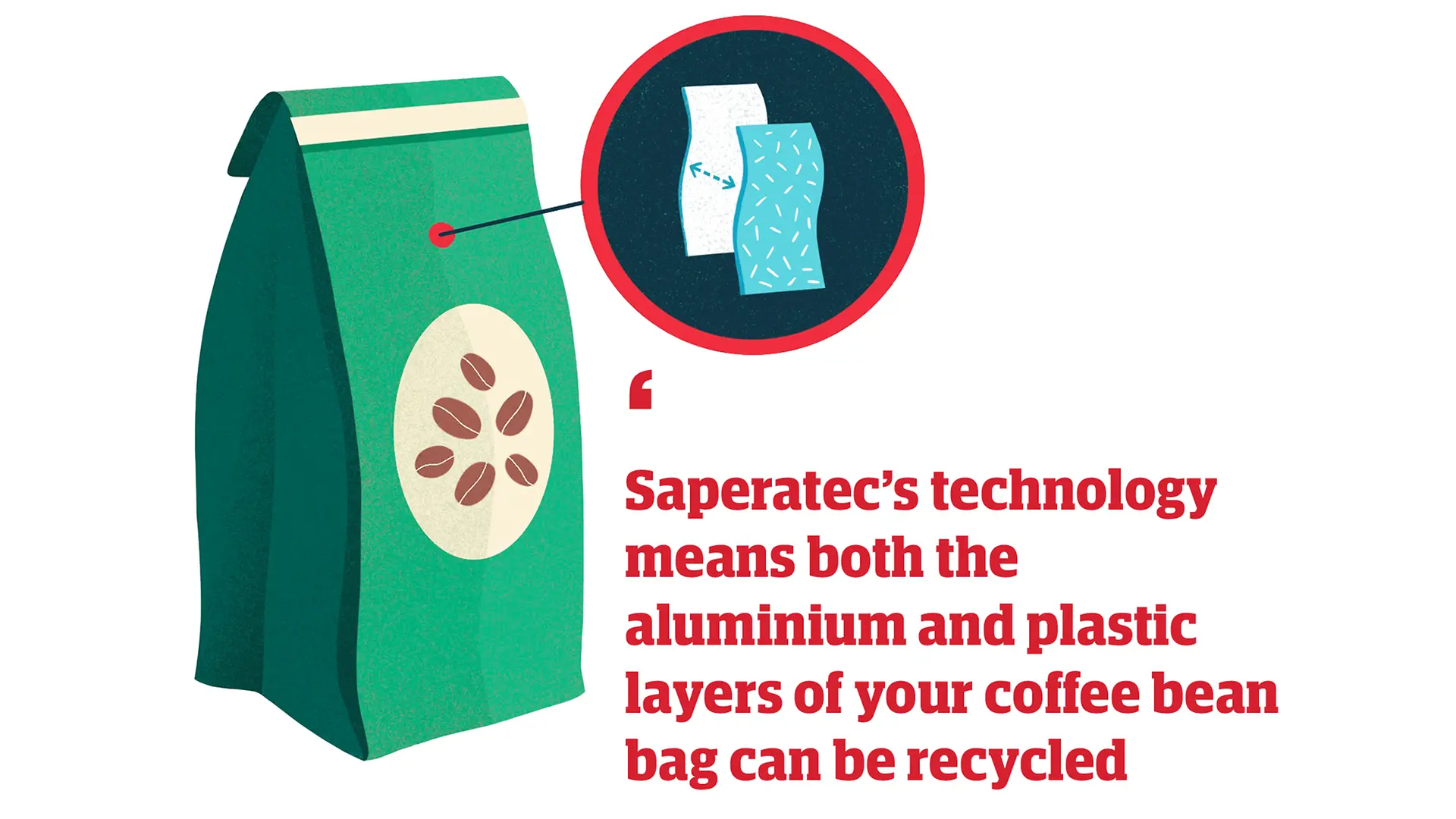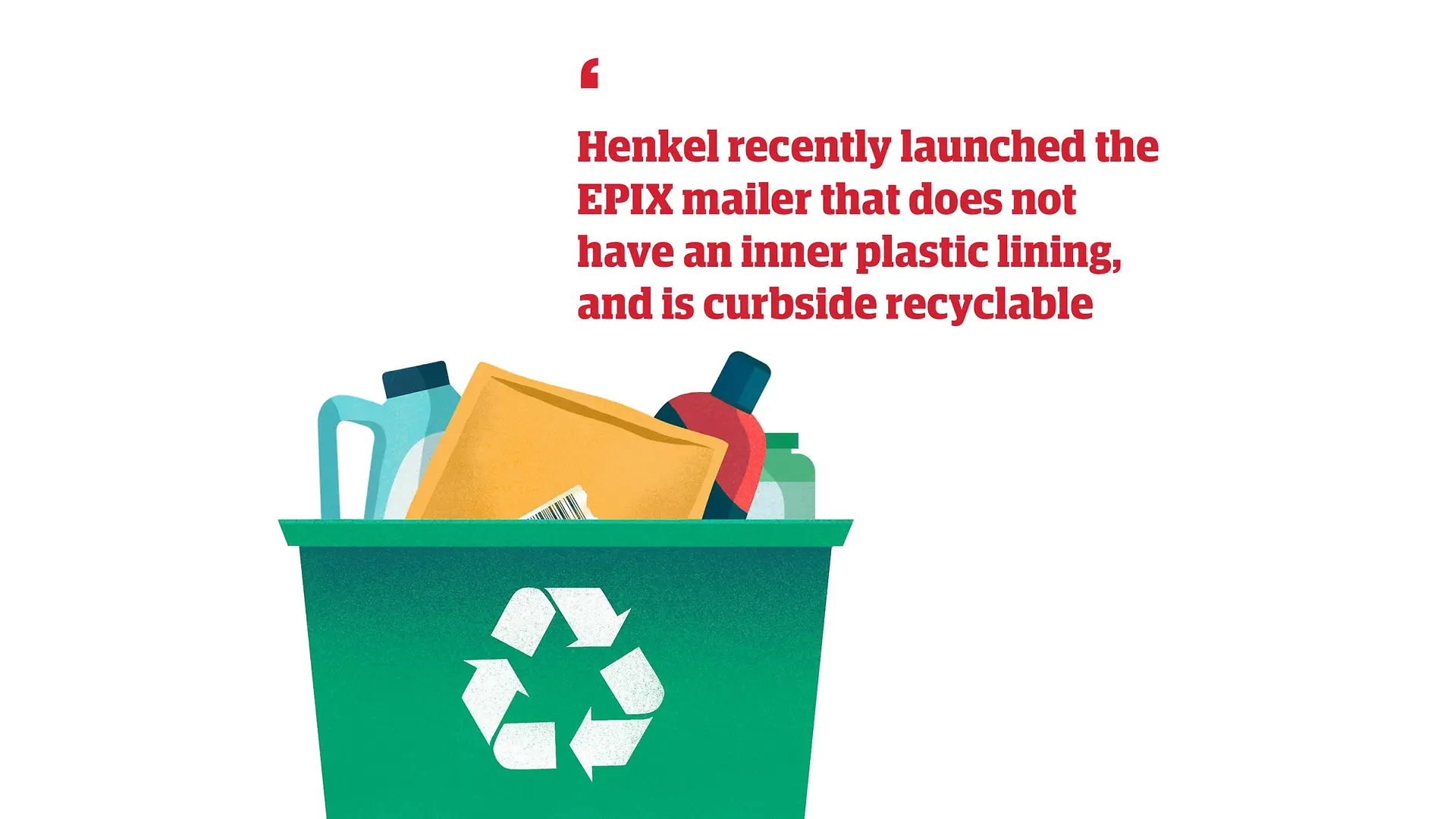Ceflex’s goal is for there to be an established collection, sorting and reprocessing infrastructure for flexible packaging across Europe by 2025. Some of the targets set out in the UK’s circular economy package – an action plan that ensures waste and resource use are minimised, and when a product reaches the end of its life, it is used again to create further value – will mean that more of the plastic we normally throw away should go for recycling instead, although there is a lot to be done before we get there. A target of 65% of household waste recycled by 2035 has been set, while the current target stands at 50%.
So how is industry helping to prevent packaging from going to landfill? It’s all well and good to have higher recycling targets, but products must be designed so that they can be recycled.
In three years, a system called extended producer responsibility (EPR) will come into force in the UK, which will require producers of plastic to pay fees to cover its responsible disposal. Houlder hopes we’ll see a change for flexible packaging then. “When the EPR system is launched in 2023, we’re hoping flexible packaging will be collected and sorted,” he says.
So while the UK lags behind many other European countries in this regard, this gives us a small grace period to ensure that when we do introduce widespread collection of flexible packaging, it won’t be for nothing.
One company on the case is Henkel, the consumer goods company behind such household names as Schwarzkopf and Pritt, and a founding partner of Ceflex. One of its three business units centres around the development and production of adhesive technologies. “What we’re doing is establishing a set of adhesives that are optimised for recycling, both for things that have been recycled for a long time – let’s say cardboard – and also for plastics,” says Dennis Bankmann, senior manager circular economy at Henkel Consumer Goods and Packaging Adhesives.
Several of Henkel’s projects involve creating, ironically, a glue that can unstick. Houlder recalls a meeting he had with Bankmann a few years ago when such a concept was bandied around. “I said to him: ‘Why can’t you make an adhesive that, under certain conditions, just lets go and we separate the two incompatible materials in the recycling process?’ He said he’d worked for Henkel for 10 years and no packaging manufacturer had ever asked him to make an adhesive that lets go!”
But today, that is exactly what they have created. Henkel has joined up with the recycling technology startup Saperatec, which has designed a process for recycling flexible packaging that has an aluminium layer – often found in pet food pouches or bags for coffee beans. Bankmann says that in Germany, where flexible packaging is collected for recycling, typically only the aluminium portion of the packaging could be recovered, not the plastic.
Saperatec’s technology means both the aluminium and plastic layers of your coffee bean bag can be recycled, and the glue holding these layers together is optimised for this process. Effectively, it debonds so the layers can come apart. “The debonding allows you to recover more [materials],” Bankmann says. “It will really be the first commercial operation of this kind in Germany.”
The adhesives developed with Saperatec’s recycling technology in mind is part of Henkel’s RE range, adhesives designed specifically with a view to recyclability, either through their compatibility with recycling, ability to debond, or enabling innovative designs.
Henkel has also developed, as part of its EPIX technology platform, materials that function beyond bonding, used primarily with paper-based products. Henkel recently launched the EPIX mailer that does not have an inner plastic lining, and is curbside recyclable. The EPIX material provides a protective layer that allows the paper pulp to recover during recycling. Additional products from the EPIX range could also be applied to things such as paper, cups or food wraps, to replace alternatives that sometimes have a plastic layer or are plastic themselves, and therefore cannot be recycled. Functional properties of EPIX materials, including thermal insulation and barrier properties, make them an attractive swap.
Choosing a paper-based product with such functional properties, for example a paper mailer that does the same job as one lined with plastic bubble wrap, could be a smart choice in places such as the UK where paper is commonly collected for recycling. And when can we see a wider range of materials collected, specifically soft plastics? Houlder points out that in order for 65% of household waste to be recycled by 2035, flexible plastics will need to start being collected. “As the targets go up and we’re increasingly circular and trying to stop the leakage [of plastic] into nature and the ocean, you have to collect and sort flexible packaging,” he says.





